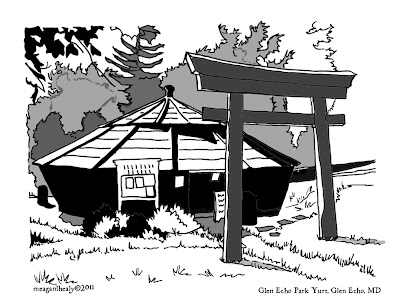Receiving a Studio Art degree from Smith College, I focused primarily on the “book arts”, such as calligraphy, woodcut, lettering and gouache painting.
By graduation, I had completed three different Special Study projects: A Gentlewoman’s Journal: Letters of Edith Sampson Healy, a medieval-inspired Herbal featuring botantical woodcuts, and lastly, a painted children’s bedtime story, (ostensibly written by my father, Tim Healy) "CrossPatch, The Flying Horse".
After college and animation school, I moved to Los Angeles to work in the animation industry. When I moved back to Maryland, I began visiting local places to get a “lay of the land”. I found really neat places - and I had an idea!
In Wyoming, where my grandparents lived, nearly every public establishment, grocery stores, gasoline stations, diners, hotels, etc., displayed a rack of postcards, featuring local and state attractions, which advertised other nearby places.
To celebrate these places of Montgomery County history, what better way to advertise what Montgomery County, MD has to offer than through note-cards, which people naturally share?
In 2010, I received an Individual Artist Grant by the Arts & Humanities Council of Montgomery County, MD and Montgomery County government to make sketches appropriate for a note-card set.
I named the project “Days Of Yore: Montgomery County”. Pun intended.
It started as an art project and turned into a tourism project.














